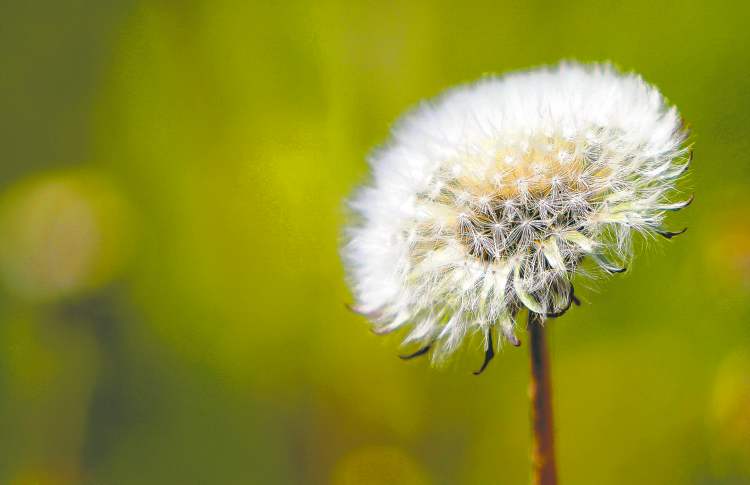Province’s chemical dependency
Government is Manitoba's biggest user of weed killers
Advertisement
Read this article for free:
or
Already have an account? Log in here »
To continue reading, please subscribe:
Monthly Digital Subscription
$0 for the first 4 weeks*
- Enjoy unlimited reading on winnipegfreepress.com
- Read the E-Edition, our digital replica newspaper
- Access News Break, our award-winning app
- Play interactive puzzles
*No charge for 4 weeks then price increases to the regular rate of $19.00 plus GST every four weeks. Offer available to new and qualified returning subscribers only. Cancel any time.
Monthly Digital Subscription
$4.75/week*
- Enjoy unlimited reading on winnipegfreepress.com
- Read the E-Edition, our digital replica newspaper
- Access News Break, our award-winning app
- Play interactive puzzles
*Billed as $19 plus GST every four weeks. Cancel any time.
To continue reading, please subscribe:
Add Free Press access to your Brandon Sun subscription for only an additional
$1 for the first 4 weeks*
*Your next subscription payment will increase by $1.00 and you will be charged $16.99 plus GST for four weeks. After four weeks, your payment will increase to $23.99 plus GST every four weeks.
Read unlimited articles for free today:
or
Already have an account? Log in here »
Hey there, time traveller!
This article was published 22/05/2012 (4924 days ago), so information in it may no longer be current.
The provincial government is the biggest user in Manitoba of weed-killing chemicals banned in other provinces and soon to be restricted here.
Last summer, according to an analysis of year-end pesticide reports filed by towns, cities, schools and other agencies, the province used 33,500 litres of weed killers such as 2,4-D, Tordon and glyphosate, all of which are banned for cosmetic use in many provinces, including Ontario and Nova Scotia.
The province’s spraying represents about 20 per cent of all herbicides sprayed in parks, schoolyards and golf courses and along highways, boulevards and ditches in Manitoba last summer. Most of the spraying was done by Manitoba Hydro around dikes and substations and by the Infrastructure and Transportation Department, especially in northern Manitoba, where 8,500 litres of a big-name weed killer called Tordon was sprayed along highways.

Cosmetic pesticides were sprayed near environmentally sensitive areas such as Oak Hammock Marsh and the Narcisse snake dens. At Oak Hammock last summer, about 25 litres of Roundup and Dyvel were used to spray for Canada thistle and quack grass.
In Ontario, which has the most complicated and comprehensive ban on non-essential pesticides in Canada, chemical weed killer is allowed only in cases where public safety is at risk. That includes outbreaks of poison ivy and spots where weeds are so bad they are blocking highway signs, damaging buildings or blocking access to utility lines.
Conservation Minister Gord Mackintosh has said he plans to crack down on the use of cosmetic pesticides. The process will start in the next few weeks with a discussion paper, public consultations will follow and legislation will be introduced later this year or early next.
Asked about the province’s heavy pesticide use, Mackintosh said he has already issued a directive to staff to begin looking at ways to curb the government’s use of big-name chemicals.
“I’ve asked my officials to look at when and where the province applies pesticides to determine if there are ways we can reduce the application,” Mackintosh said.
That could include a “pesticide last” approach, in which all other weed-control measures are tried before crews bring out the big guns and spraying happens only where small patches of weeds exist rather than employing routine, all-over preventative spraying.
All the products used by the province — and by every other permit holder, such as school divisions, golf courses and municipalities — are approved by Health Canada as safe if properly applied. But many environmentalists, physician organizations and the Canadian Cancer Society have long called on governments to restrict cosmetic pesticide use as a way to protect habitats and limit Canadians’ exposure to carcinogens.
Manitoba is among the last provinces to begin work on a cosmetic-pesticide ban and, among dozens of municipalities in Canada, Brandon is the only one in Manitoba with restrictions on the use of non-essential weed killers.
According to a Winnipeg Free Press analysis, roughly 166,000 litres of chemicals — all of which are restricted in many other provinces — were sprayed on schools, golf courses, parks and other public spaces last year.
maryagnes.welch@freepress.mb.ca
From your lawn to the Red River
Conservation Minister Gord Mackintosh has said he is most concerned about the use of cosmetic weed killers on lawns. But it’s nearly impossible to know how much Roundup and Killex Winnipeggers use to zap dandelions. Unlike farmers, who tend to use expensive pesticides sparingly, and professional weed-control crews, who have been trained and licensed, homeowners often blitz weeds with way more chemicals than necessary.
The year after a cosmetic-pesticide ban was implemented in Ontario, the amount of weed-killing chemicals found in 10 urban waterways dropped by roughly 80 per cent.
In 1995, staff in Manitoba’s water-quality section studied pesticides in surface water, including the Red River as it flowed through Winnipeg. They found the concentrations of 2,4-D and dicamba, two common weed killers, were much higher north of Winnipeg than south of the city. That suggests homeowners, golf courses, city parks and market gardens in Winnipeg were responsible for some of the chemical run-off.
— sources: An Assessment of Pesticide Residues in Surface Water of Manitoba, Canada (1995); Changes in Urban Stream Water Pesticide Concentrations One Year after a Cosmetic Pesticides Ban (Ontario, 2010)


